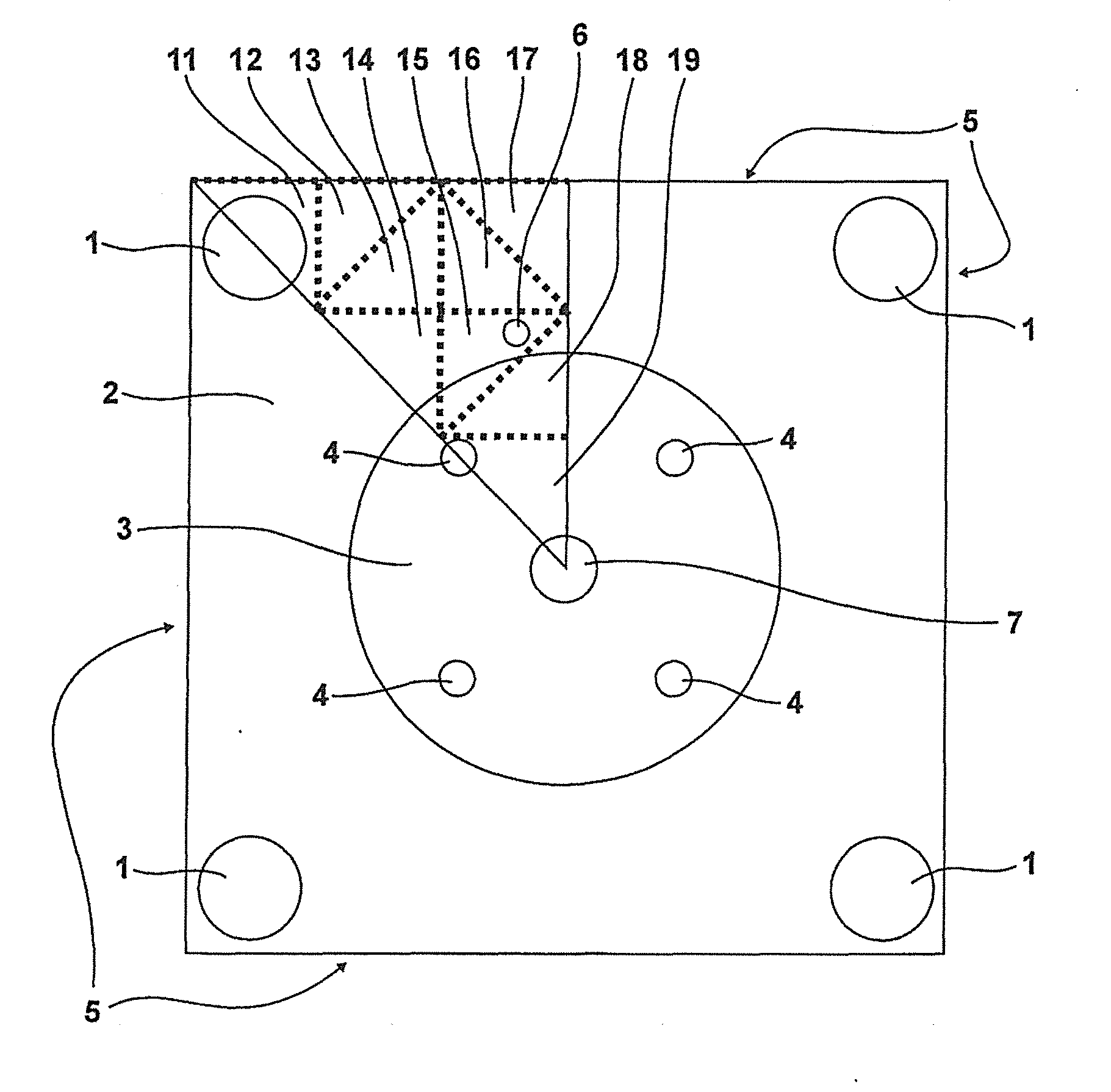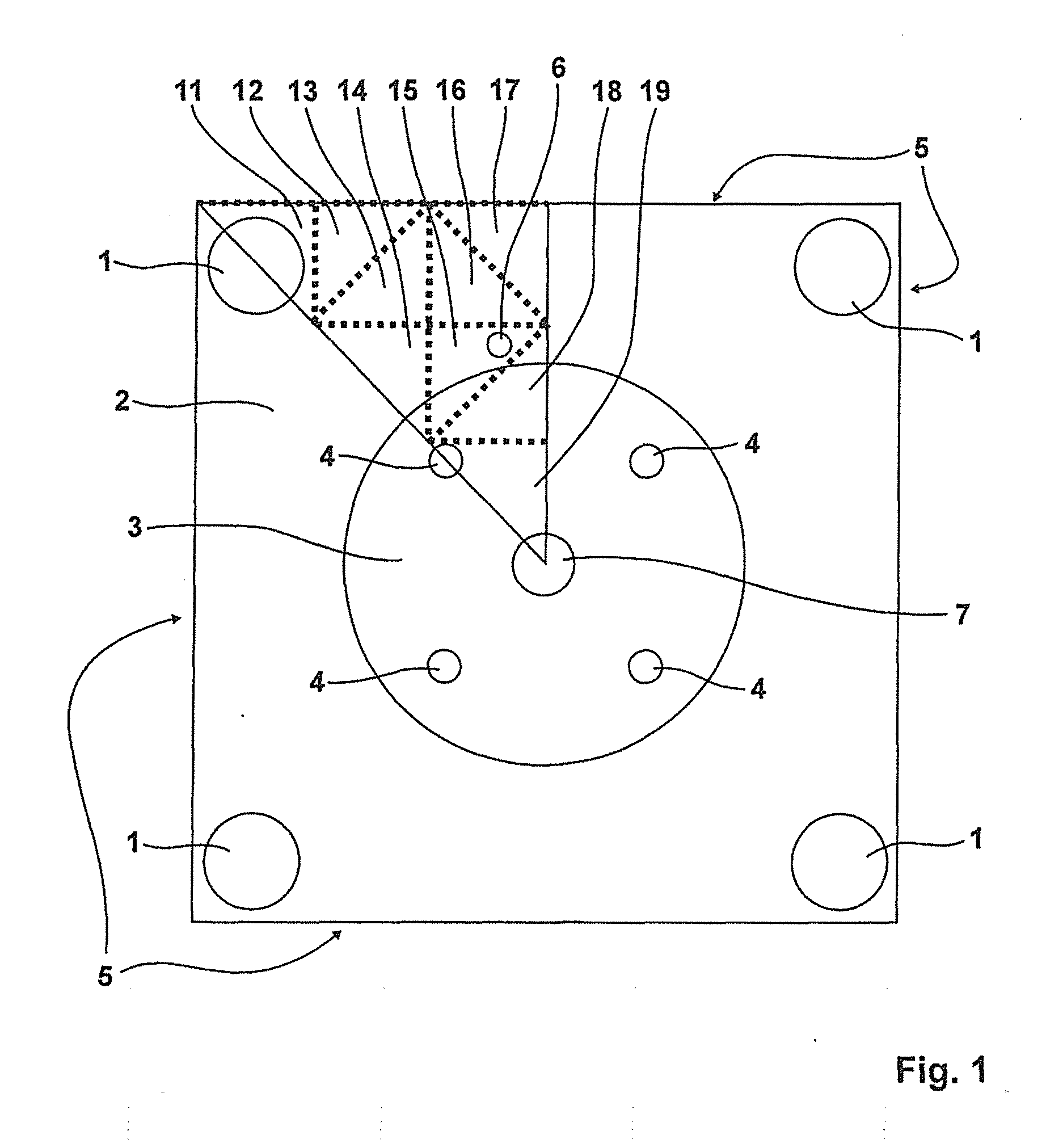Method and apparatus for controlling the temperature of a calibration volume of a device for comparative calibration of temperature sensors
a technology for temperature sensors and calibration volumes, applied in adaptive control, instruments, heat measurement, etc., can solve the problems of large inertia of the controlled system, inability to adjust or complicated the control parameters, and the control of temperature calibrators is dependent on optimal control parameters. , to achieve the effect of high accuracy, avoiding overshoots and achieving faster temporal stability of the calibration volum
- Summary
- Abstract
- Description
- Claims
- Application Information
AI Technical Summary
Benefits of technology
Problems solved by technology
Method used
Image
Examples
Embodiment Construction
[0041]FIG. 1 shows a thermal model of a portable metal block calibrator, on whose basis hereinafter the control of the temperature of the calibration volume 3 of the metal block calibrator to a target temperature is performed.
[0042]Into the calibration volume 3 can be inserted metallic sleeves adapted to temperature sensors to be checked, with receiving bores 4 for the samples. The temperature of the calibration volume 3 is measured by means of an external reference sensor 7. The indicator of the internal reference sensor 6 is the only source of information on the temperature distribution in the heat transfer part 2 which is designed as a metal block. To control the temperature of the calibration volume 3 to the desired target value, the heat sources 1 designed as heating elements can be activated or deactivated with an electronic control system. The outer sides of the heat conduction part 2 fulfill the function of a heat sink 5. For modeling the dynamics of the thermal states, the ...
PUM
| Property | Measurement | Unit |
|---|---|---|
| frequency | aaaaa | aaaaa |
| temperatures | aaaaa | aaaaa |
| constant-time | aaaaa | aaaaa |
Abstract
Description
Claims
Application Information
 Login to View More
Login to View More - R&D
- Intellectual Property
- Life Sciences
- Materials
- Tech Scout
- Unparalleled Data Quality
- Higher Quality Content
- 60% Fewer Hallucinations
Browse by: Latest US Patents, China's latest patents, Technical Efficacy Thesaurus, Application Domain, Technology Topic, Popular Technical Reports.
© 2025 PatSnap. All rights reserved.Legal|Privacy policy|Modern Slavery Act Transparency Statement|Sitemap|About US| Contact US: help@patsnap.com



